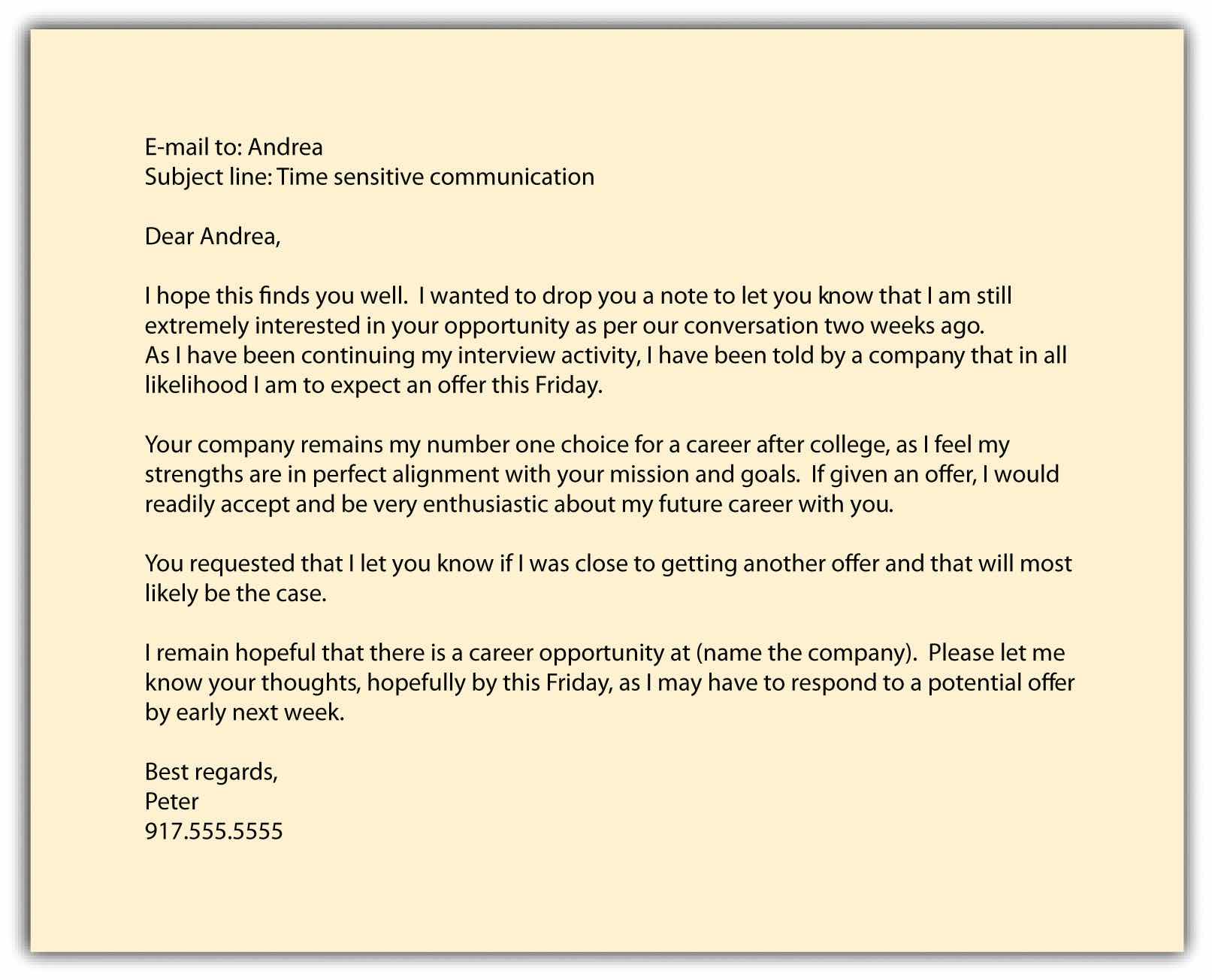
Step 1 of the job search emphasized that an individual should shoot for at least ten targets during a job search. Your goal is to receive as many offers as possible. Offers equal negotiation power. If you plan your job search strategy properly, many of your targets will move toward step 6.
As you move toward an offer with one company, it’s important to communicate with the others as to when you expect to receive an offer. To be fair, give each company the needed lead time to prepare an offer.
Peter interviews with Company A, which is his number one company. If he receives an offer, he will readily accept. Company A has interviewed Peter twice, and he is a finalist. They are not ready to extend offers until next month, but they ask that Peter let them know if he receives an offer from another company.
Peter has interviewed with Company B and he is put on hold.
Peter then interviews with Company C just hoping to get an offer, so he can leverage that with Company A. Things go very well and he is more interested than he thought. If given an offer, he would seriously consider accepting. Company C lets Peter know he will receive a call regarding his candidacy on Friday and that they feel very positive about what he has to offer. They do not, however, tell him that he will definitely receive an offer.
Peter has interviews with Company D, E, and F in the next ten days.
Peter calls Company A and sends the following e-mail:

This e-mail communicates six very important things:
Donna wants to teach in an elementary school and has been networking and meeting several principals. Two of them have interviewed her and have expressed interest in her teaching at their school.
Donna really wants to work at P.S. 55 and has received an offer as a teaching assistant. Luckily, Donna was also offered a position at P.S. 22 for a full-time teaching position, but she would much rather work at P.S. 55. She can negotiate with the principal at P.S. 55 in the following way:
When you have multiple searches occurring at the same time, stay organized by having a playbookA short concise reference document that helps to direct an effort. of sorts, as illustrated in Table 10.1 "Job Search Plan".
Table 10.1 Job Search Plan
| Company Name | Name of Contact | E-mail and Phone | Position of Interest | How You Found Out about the Position | Actions Taken | Deadlines | Next Steps | |
|---|---|---|---|---|---|---|---|---|
| 1 | ||||||||
| 2 | ||||||||
| 3 | ||||||||
| 4 | ||||||||
| 5 | ||||||||
| 6 | ||||||||
| 7 | ||||||||
| 8 | ||||||||
| 9 | ||||||||
| 10 |
This single page in your playbook will keep all high-level information and each subsequent page can keep more detailed information. Reviewing this playbook on a regular basis ensures that you stay proactive on every job search target. It also reminds you that you should have ten targets at any given time, because some job targets are bound to go cold.
The best candidates communicate consistently with recruiters, hiring managers, and networking contacts. If you’ve met three or four helpful networking contacts, and for some reason you did not make it to the final round, communicate with them as well, thanking them for the information they shared with you, even though your candidacy will not continue. Ask them if it’s OK that you continue to keep in touch, and wish them well with their careers. Individuals do shift positions and companies, and the world can be an amazingly small place. It’s quite possible that you will meet that person at another time, company, school, or organization, so include them in your LinkedIn contacts.
Poor communication can lead to poor decisions. If Donna didn’t explore full-time teaching opportunities at P.S. 55, she could have missed a full-time teaching position that opened up the next month. If Peter never sent the e-mail to Company A, and Company C gave Peter an offer with three days to accept, Company A may not have had the time to put together an offer by the deadline date set by Company C. Peter would have either gone with Company C (his second choice), or reneged on his acceptance to Company C by accepting the offer that finally came from Company A. Reneging is viewed negatively by some recruiters and by career services, so proceed with caution. At times, an employer will contact a student’s career services office to let them know that their offer was reneged on. Some career services offices deal harshly with students who breach such promises, so proceed with caution. Records of how many students renegeMeans that you first accept a job and then decide to later turn it down for another opportunity. on their offers aren’t kept, but one thing is certain: it’s never looked upon lightly. Communication with career services can help to avoid this at all costs.
One last point: never misrepresent an offer from a company to a representative at another company. The truth does have a way of making itself known.